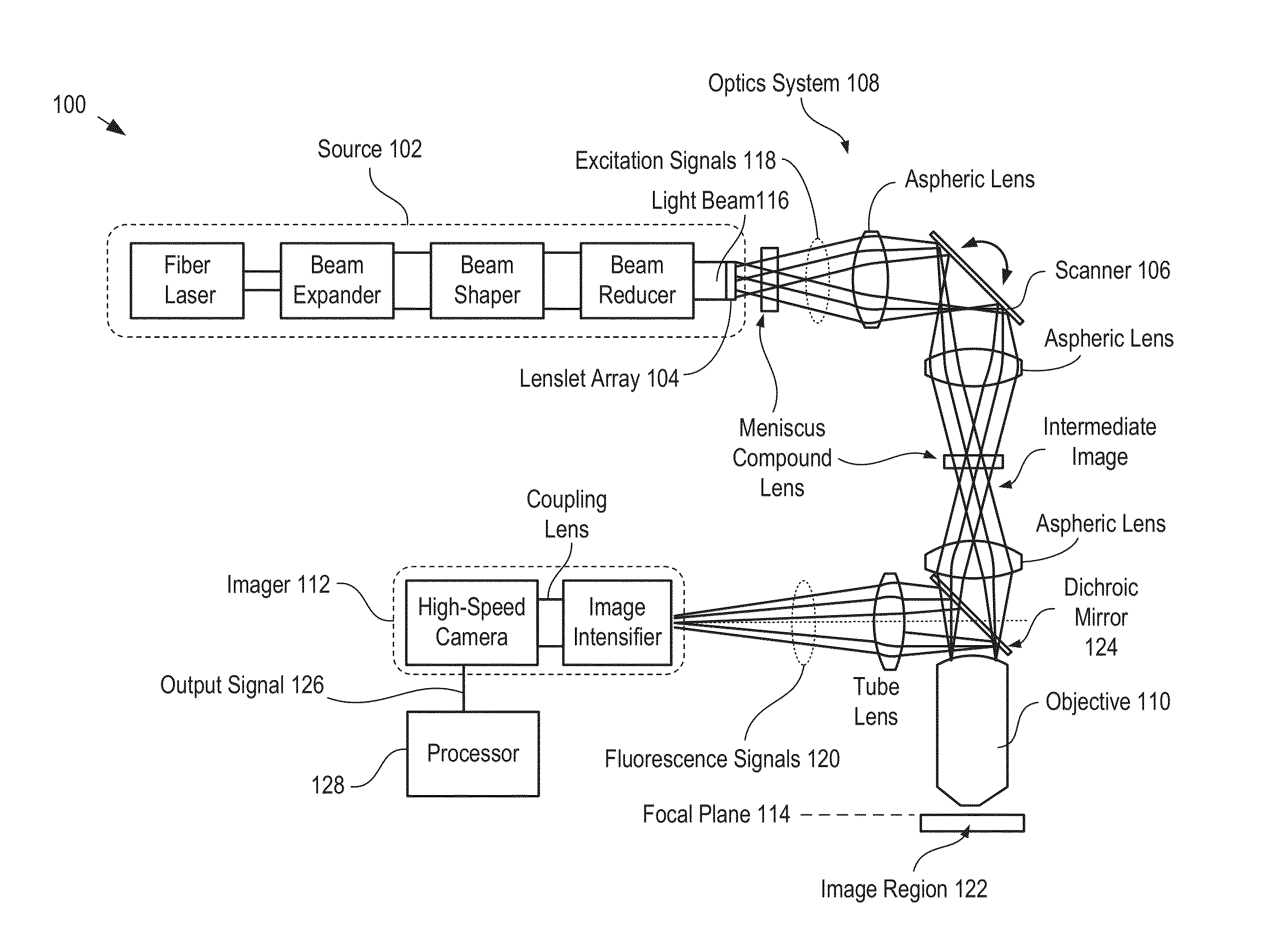Multi-photon microscope having an excitation-beam array
a multi-photon microscope and beam array technology, applied in the field of microscopy, can solve the problems of reducing the efficiency of scanning, and reducing the number of photons collected, so as to reduce the complexity and cost, reduce crosstalk, and keep the average optical power delivered to brain tissue within a tolerable level.
- Summary
- Abstract
- Description
- Claims
- Application Information
AI Technical Summary
Benefits of technology
Problems solved by technology
Method used
Image
Examples
Embodiment Construction
[0023]FIG. 1 depicts a schematic drawing of a portion of an imaging system in accordance with an illustrative embodiment of the present invention. Imaging system 100 is a two-photon laser-scanning microscopy system that comprises source 102, lenslet array 104, scanner 106, optics system 108, objective 110, imager 112, and processor 128. In some embodiments, imaging system 100 is a single-photon microscopy system. In some embodiments, imaging system 100 is a multi-photon microscopy system that requires more than two photons to excite a fluorophore.
[0024]FIG. 2 depicts operations of a method suitable for imaging an image region in accordance with the illustrative embodiment of the present invention. Method 200 begins with operation 201, wherein light beam 116 is provided to lenslet array 104.
[0025]Source 102 includes an ultrashort-pulsed regenerative fiber laser amplifier (hereinafter referred to as a “fiber laser”) that emits light at approximately 1030 nm (e.g., a regenerative ultra...
PUM
 Login to View More
Login to View More Abstract
Description
Claims
Application Information
 Login to View More
Login to View More - R&D
- Intellectual Property
- Life Sciences
- Materials
- Tech Scout
- Unparalleled Data Quality
- Higher Quality Content
- 60% Fewer Hallucinations
Browse by: Latest US Patents, China's latest patents, Technical Efficacy Thesaurus, Application Domain, Technology Topic, Popular Technical Reports.
© 2025 PatSnap. All rights reserved.Legal|Privacy policy|Modern Slavery Act Transparency Statement|Sitemap|About US| Contact US: help@patsnap.com



